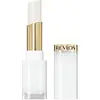What's inside
What's inside
 Key Ingredients
Key Ingredients

 Benefits
Benefits

 Concerns
Concerns

 Ingredients Side-by-side
Ingredients Side-by-side

Polybutene
Diisostearyl Malate
EmollientHydrogenated Polyisobutene
EmollientDiphenylsiloxy Phenyl Trimethicone
Skin ConditioningBis-Diglyceryl Polyacyladipate-2
EmollientOctyldodecyl Neopentanoate
EmollientHydrogenated Polydecene
EmollientDiisopropyl Dimer Dilinoleate
EmollientC10-30 Cholesterol/Lanosterol Esters
EmulsifyingOzokerite
Emulsion StabilisingPolyethylene
AbrasiveSynthetic Wax
AbrasiveSilica Silylate
EmollientMica
Cosmetic ColorantAloe Barbadensis Leaf Extract
EmollientSodium Hyaluronate
HumectantQuartz
AbrasiveBHT
AntioxidantButylene Glycol
HumectantCaprylyl Glycol
EmollientEthylhexyl Palmitate
EmollientHexylene Glycol
EmulsifyingPentaerythrityl Tetraethylhexanoate
EmollientSilica Dimethyl Silylate
EmollientParfum
MaskingPhenoxyethanol
PreservativePolybutene, Diisostearyl Malate, Hydrogenated Polyisobutene, Diphenylsiloxy Phenyl Trimethicone, Bis-Diglyceryl Polyacyladipate-2, Octyldodecyl Neopentanoate, Hydrogenated Polydecene, Diisopropyl Dimer Dilinoleate, C10-30 Cholesterol/Lanosterol Esters, Ozokerite, Polyethylene, Synthetic Wax, Silica Silylate, Mica, Aloe Barbadensis Leaf Extract, Sodium Hyaluronate, Quartz, BHT, Butylene Glycol, Caprylyl Glycol, Ethylhexyl Palmitate, Hexylene Glycol, Pentaerythrityl Tetraethylhexanoate, Silica Dimethyl Silylate, Parfum, Phenoxyethanol
Bis-Behenyl/Isostearyl/Phytosteryl Dimer Dilinoleyl Dimer Dilinoleate
EmollientHydrogenated Polyisobutene
EmollientTridecyl Trimellitate
EmollientHydrogenated Styrene/Methylstyrene/Indene Copolymer
Diisostearyl Malate
EmollientSimmondsia Chinensis Seed Oil
EmollientMicrocrystalline Wax
Emulsion StabilisingMangifera Indica Seed Butter
Skin ConditioningTheobroma Cacao Seed Butter
EmollientOctyldodecanol
EmollientButyrospermum Parkii Butter
Skin ConditioningSynthetic Wax
AbrasivePolyglyceryl-2 Diisostearate
EmulsifyingSilica Dimethyl Silylate
EmollientParfum
MaskingEthylene/Propylene/Styrene Copolymer
Limnanthes Alba Seed Oil
Skin ConditioningDiethylhexyl Syringylidenemalonate
Skin ProtectingDisteardimonium Hectorite
StabilisingTocopherol
AntioxidantEthylhexylglycerin
Skin ConditioningDipotassium Glycyrrhizate
HumectantGlyceryl Behenate
EmollientPropylene Carbonate
SolventHelianthus Annuus Seed Oil
EmollientHydrolyzed Sodium Hyaluronate
Skin ConditioningPentaerythrityl Tetra-Di-T-Butyl Hydroxyhydrocinnamate
AntioxidantButylene/Ethylene/Styrene Copolymer
Caprylic/Capric Triglyceride
MaskingCI 77891
Cosmetic ColorantCI 77492
Cosmetic ColorantCI 15850
Cosmetic ColorantCI 77499
Cosmetic ColorantCI 77491
Cosmetic ColorantBis-Behenyl/Isostearyl/Phytosteryl Dimer Dilinoleyl Dimer Dilinoleate, Hydrogenated Polyisobutene, Tridecyl Trimellitate, Hydrogenated Styrene/Methylstyrene/Indene Copolymer, Diisostearyl Malate, Simmondsia Chinensis Seed Oil, Microcrystalline Wax, Mangifera Indica Seed Butter, Theobroma Cacao Seed Butter, Octyldodecanol, Butyrospermum Parkii Butter, Synthetic Wax, Polyglyceryl-2 Diisostearate, Silica Dimethyl Silylate, Parfum, Ethylene/Propylene/Styrene Copolymer, Limnanthes Alba Seed Oil, Diethylhexyl Syringylidenemalonate, Disteardimonium Hectorite, Tocopherol, Ethylhexylglycerin, Dipotassium Glycyrrhizate, Glyceryl Behenate, Propylene Carbonate, Helianthus Annuus Seed Oil, Hydrolyzed Sodium Hyaluronate, Pentaerythrityl Tetra-Di-T-Butyl Hydroxyhydrocinnamate, Butylene/Ethylene/Styrene Copolymer, Caprylic/Capric Triglyceride, CI 77891, CI 77492, CI 15850, CI 77499, CI 77491
 Reviews
Reviews

Ingredients Explained
These ingredients are found in both products.
Ingredients higher up in an ingredient list are typically present in a larger amount.
Diisostearyl Malate is an emollient and most often used in lip products. It comes from isostearyl alcohol, a fatty acid, and malic acid, an AHA.
As an emollient, Diisostearyl Malate helps create a thin film on your skin to trap moisture in. This helps keep your skin soft and smooth.
Hydrogenated Polyisobutene is a synthetic polymer. Polymers are compounds with high molecular weight. Hydrogenated Polyisobutene is an emollient and texture enhancer.
In one study, Hydrogenated Polyisobutene showed better skin hydration levels than Caprylic/Capric Triglyceride. As an emollient, it helps keep your skin soft and hydrated by trapping moisture in.
Hydrogenated Polyisobutene is often used as a mineral oil replacement.
Learn more about Hydrogenated PolyisobuteneParfum is a catch-all term for an ingredient or more that is used to give a scent to products.
Also called "fragrance", this ingredient can be a blend of hundreds of chemicals or plant oils. This means every product with "fragrance" or "parfum" in the ingredients list is a different mixture.
For instance, Habanolide is a proprietary trade name for a specific aroma chemical. When used as a fragrance ingredient in cosmetics, most aroma chemicals fall under the broad labeling category of “FRAGRANCE” or “PARFUM” according to EU and US regulations.
The term 'parfum' or 'fragrance' is not regulated in many countries. In many cases, it is up to the brand to define this term.
For instance, many brands choose to label themselves as "fragrance-free" because they are not using synthetic fragrances. However, their products may still contain ingredients such as essential oils that are considered a fragrance by INCI standards.
One example is Calendula flower extract. Calendula is an essential oil that still imparts a scent or 'fragrance'.
Depending on the blend, the ingredients in the mixture can cause allergies and sensitivities on the skin. Some ingredients that are known EU allergens include linalool and citronellol.
Parfum can also be used to mask or cover an unpleasant scent.
The bottom line is: not all fragrances/parfum/ingredients are created equally. If you are worried about fragrances, we recommend taking a closer look at an ingredient. And of course, we always recommend speaking with a professional.
Learn more about ParfumThis silica is mainly used to thicken oils and suspend particles in oils. It is not water soluble.
According to the manufacturer, it:
The manufacturer also claims this ingredient to be useful in makeup.
In lipstick formulations, this ingredient improves color payoff, reduces pigment settling, and reduces oil bleeding. This ingredient also improves the grip of powder products such as dry shampoos.
Learn more about Silica Dimethyl SilylateSynthetic Wax is created from fossil fuels such as natural gas. It is used to enhance texture, adjust pH, and as an occlusive.
It may also be used as an abrasive ingredient to exfoliate the skin.
Synthetic Wax may not be fungal acne safe.
Learn more about Synthetic Wax